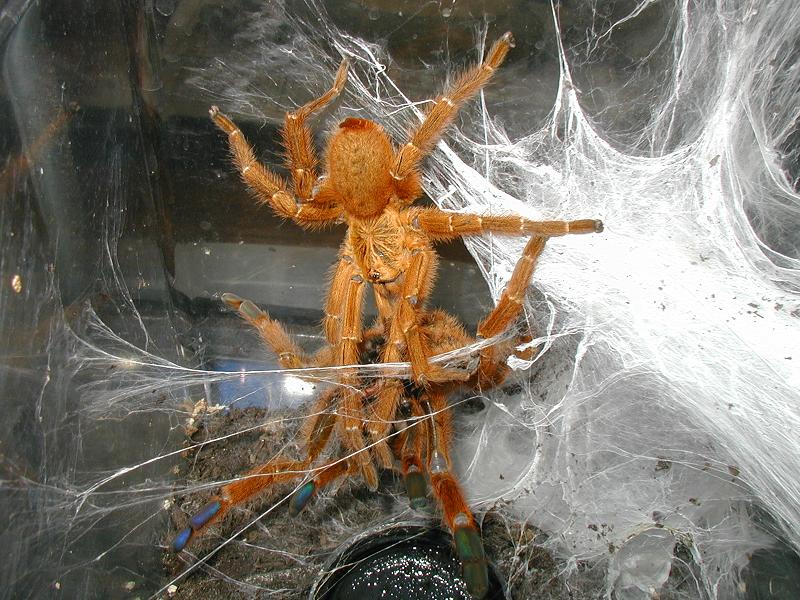GENERAL INFORMATION
Commonly called OBT's because of there aggressive nature.They should not be handled, as they are considered very aggressive although they show no signs of aggression. They are however very skittish and can move very, very quickly. There a popular species because of there color, hardiness and price

ADULT SIZE
4-5 inches
ENCLOSURE
5-10 gallon tank with a secure screen lid
SUBSTRATE
4 to 6 inches of peat moss, vermiculite, coco fiber, or sphagnum moss are all fine choices.
Each will hold moisture well
TEMPERATURE/HUMIDITY
Temperature 70-80F
Humidity 65-70%
FOOD/WATER
They'll eat crickets, roaches and other insects and vertebrates
Feed 1-3 crickets a week
HEATING
A heat mat placed on the side of the tank at one end of the enclosure should do fine
LIGHTING
No lighting, lighting is harmful to tarantulas
Commonly called OBT's because of there aggressive nature.They should not be handled, as they are considered very aggressive although they show no signs of aggression. They are however very skittish and can move very, very quickly. There a popular species because of there color, hardiness and price

ADULT SIZE
4-5 inches
ENCLOSURE
5-10 gallon tank with a secure screen lid
SUBSTRATE
4 to 6 inches of peat moss, vermiculite, coco fiber, or sphagnum moss are all fine choices.
Each will hold moisture well
TEMPERATURE/HUMIDITY
Temperature 70-80F
Humidity 65-70%
FOOD/WATER
They'll eat crickets, roaches and other insects and vertebrates
Feed 1-3 crickets a week
HEATING
A heat mat placed on the side of the tank at one end of the enclosure should do fine
LIGHTING
No lighting, lighting is harmful to tarantulas